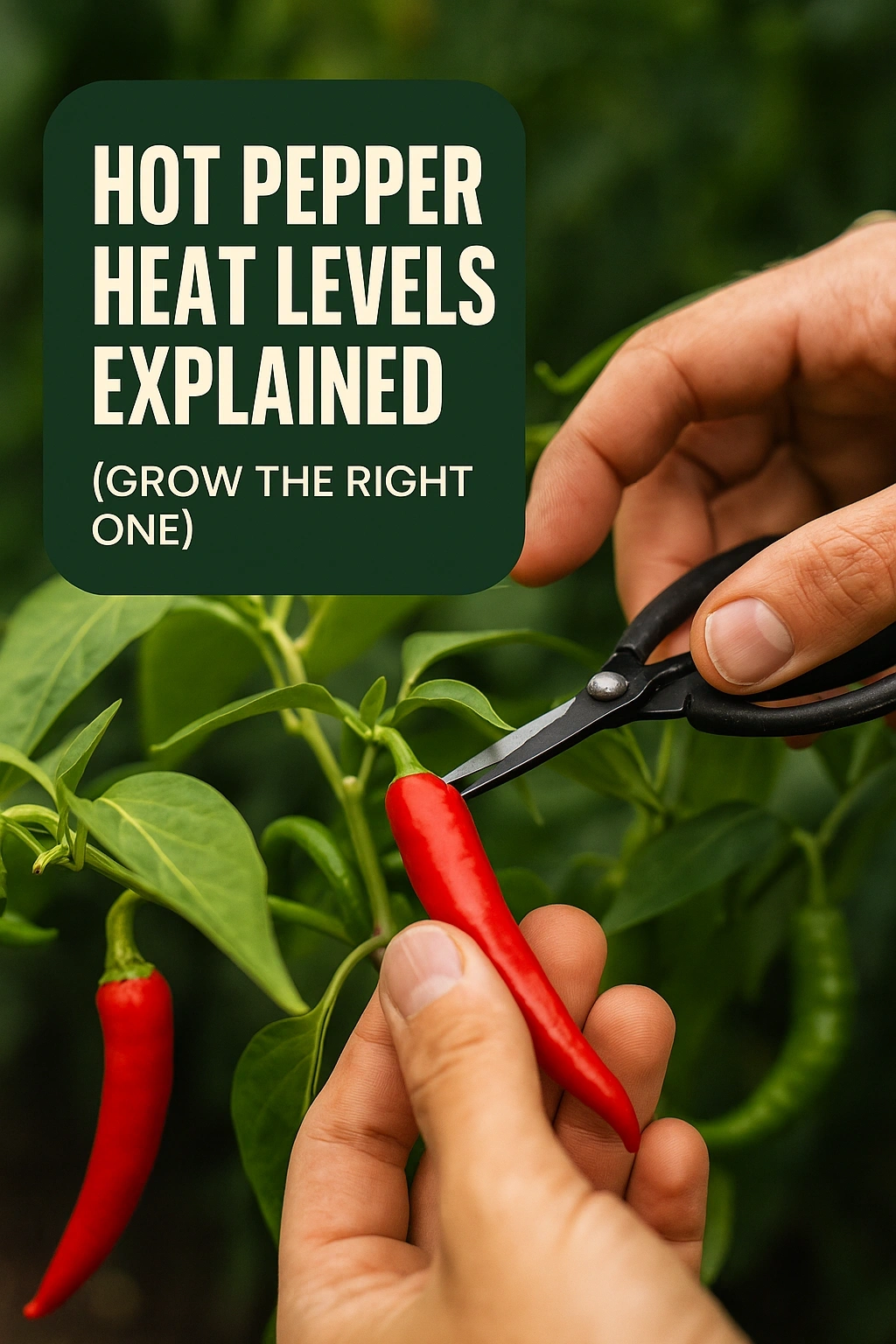
Hot peppers are beloved by many for their unique flavors and varying levels of heat. But with so many types available, how do you choose the right one for your taste and culinary needs? In this article, we will explore the heat levels of different hot pepper varieties, explain how heat is measured, and offer guidance on growing peppers that suit your preference. Whether you are a novice gardener or an experienced cook, understanding these elements will enhance your culinary adventures.
The Science of Heat in Peppers
The heat of peppers is primarily determined by the presence of a compound called capsaicin. This compound binds to receptors in our mouths, creating a sensation of heat. The more capsaicin a pepper contains, the hotter it will feel. The heat level of peppers is quantified using the Scoville Heat Scale, which measures the concentration of capsaicin in a pepper.
Scoville Heat Scale Explained
The Scoville Heat Scale was developed in 1912 by Wilbur Scoville and remains the standard for measuring pepper heat today. Peppers are assigned a Scoville Heat Unit (SHU) rating based on taste tests that measure the dilution of capsaicin required to neutralize the heat. For example, a bell pepper has a rating of 0 SHU, while a Carolina Reaper, one of the hottest peppers, has an average rating of over 1.6 million SHU.
Understanding SHU Ratings
SHU ratings allow consumers to gauge the heat of various peppers effectively. Here are some common examples:
- Bell Pepper: 0 SHU (sweet and mild)
- Poblano: 1,000 – 2,000 SHU (mild)
- Jalapeño: 2,500 – 8,000 SHU (medium)
- Serrano: 3,500 – 5,000 SHU (medium)
- Cayenne Pepper: 30,000 – 50,000 SHU (hot)
- Habanero: 100,000 – 350,000 SHU (very hot)
- Carolina Reaper: 1,400,000 – 2,200,000 SHU (extremely hot)
Choosing the Right Hot Pepper for Your Taste
When selecting peppers, consider both heat level and flavor. Some peppers, like jalapeños, offer a good balance of heat and taste, making them suitable for various dishes. Others, such as habaneros, are known for their fruity flavor but can be overwhelming in terms of heat. Understanding your heat tolerance is essential in making the right choice.
Factors to Consider When Choosing
- Heat Tolerance: Assess how much heat you enjoy. Start with milder peppers if you’re new to spicy foods.
- Cooking Method: Some peppers lose heat when cooked, while others maintain their spiciness. Consider how you plan to use them.
- Flavor Profile: Different peppers have unique flavors. Experiment to find which ones complement your favorite dishes.
Growing Your Own Hot Peppers
If you’re interested in growing hot peppers, it’s essential to select varieties that match your climate and taste preferences. Peppers thrive in warm conditions and require plenty of sunlight, making them ideal for summer gardens. A well-draining, nutrient-rich soil will help your plants flourish.
Steps for Successful Pepper Cultivation
- Seed Selection: Choose seeds based on desired heat level and flavor. Heirloom varieties often produce unique tastes.
- Soil Preparation: Ensure good drainage and nutrient content. Adding compost can enrich the soil.
- Watering: Water regularly but avoid overwatering. Peppers prefer consistent moisture without soggy roots.
- Pest Management: Keep an eye out for pests and diseases. Organic solutions can help manage common issues.
- Harvesting: Pick peppers when they reach the desired size and color. Harvesting regularly encourages further growth.
Hot Pepper Varieties and Their Uses
Different hot pepper varieties can elevate specific dishes, from salsas and sauces to stir-fries and marinades. Understanding the unique characteristics of each type can help you make the best choices in the kitchen.
Popular Pepper Varieties and Their Culinary Uses
- Jalapeño: Ideal for salsas, nachos, and stuffed peppers.
- Habanero: Great for hot sauces and marinades, providing a fruity flavor alongside heat.
- Poblano: Excellent for roasting and stuffing due to its mild flavor.
- Ghost Pepper: Used sparingly in sauces and spicy dishes for those who seek intense heat.
FAQs About Hot Pepper Heat Levels
What is the hottest pepper in the world?
The Carolina Reaper currently holds the title for the hottest pepper, with an average heat level of over 1.6 million SHU.
How can I reduce the heat of a dish that is too spicy?
To reduce heat, consider adding dairy products like sour cream or yogurt, or balance the spice with sweetness from honey or sugar.
Are there any health benefits to eating hot peppers?
Yes, hot peppers can provide health benefits such as improved metabolism, pain relief from capsaicin, and potential cardiovascular benefits.
Can I grow hot peppers indoors?
Yes, hot peppers can be successfully grown indoors with adequate light, warmth, and proper care, making them suitable for indoor gardening.
What should I do if I accidentally touch hot pepper seeds or skin?
Always wash your hands thoroughly with soap and water. If irritation occurs, applying a mixture of baking soda and water can help soothe the skin.
Understanding the heat levels of hot peppers and how to grow the right ones can significantly enhance your culinary experiences. With this knowledge, you can confidently embrace the world of spicy cooking and gardening, ensuring that each dish you create is perfectly tailored to your taste preferences.
